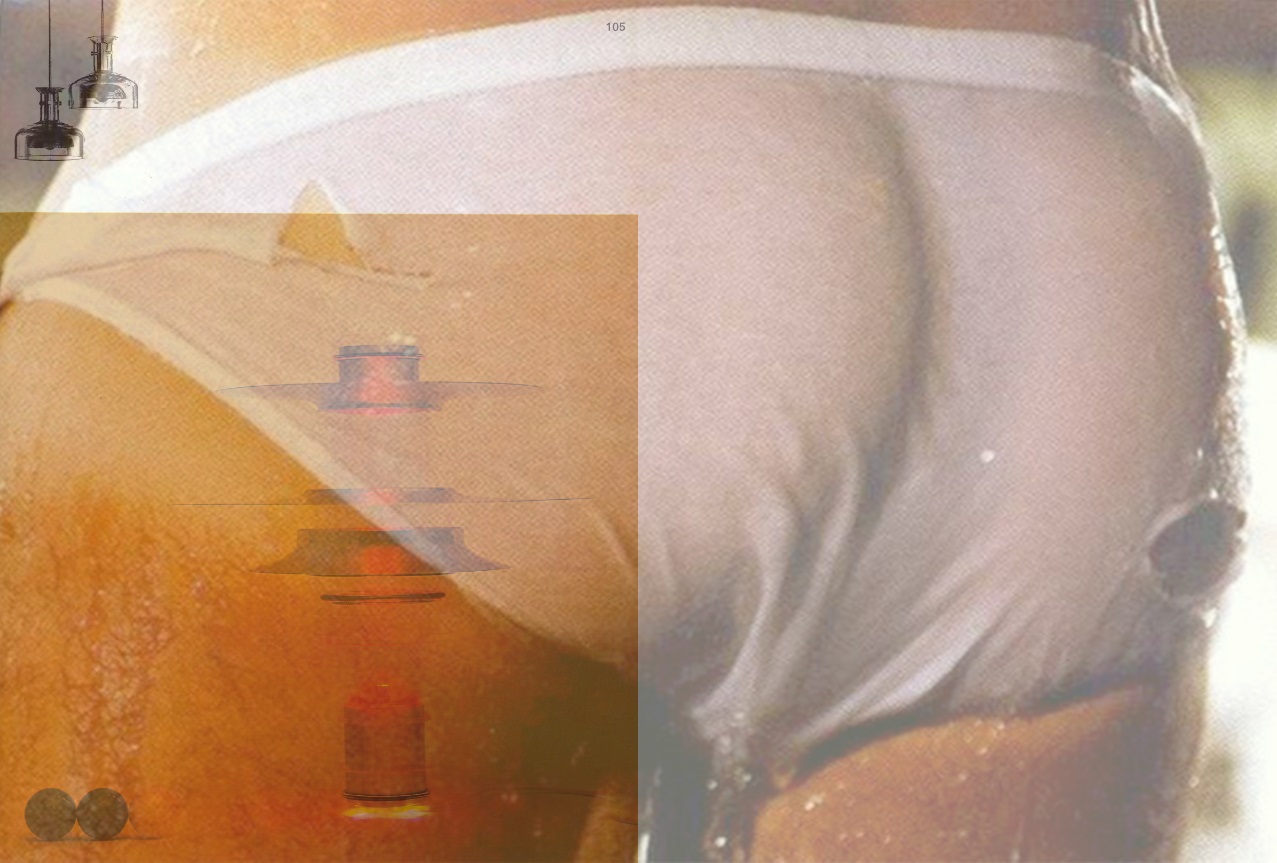


Ralph Dunn, ‘Orange Light (colour) with wet pants’ from the series ‘Decorative Art and Other Scenarios’, Archival Print on paper, 59 x 84 cm
Notions of equality, inclusion and tolerance for LGBTQ youth were not applicable in Thatcherite Britain. Growing up gay in Britain in the 80s, Ralph Dunn was exposed to verbal and physical abuse that often led to toxic feelings of guilt, shame and an overall lack of self-worth. He turned to art as an exploration of self and a way of making sense of a hostile world around him.
Influenced and inspired by the identity politics that was gaining momentum on the other side of the Atlantic, Dunn was looking at the work and strategies of the art collective General Idea and Nayland Blake, and developed a strong affinity for the work of Robert Morris.
For his MA degree show he created a neon piece which was installed at the Crypt Space at Chelsea College. Titled Dislocated Sign, the work mirrored his state of mind: feeling broken, dislocated and alone in the dark. Dunn had found a creative way to speak about himself through imbuing inanimate objects with ideas, emotions and occasionally sexual energy. Group Encounter, 2013 is charged with sexuality, as are many of his photographs such as Labyrinth, Burnt Physique and Untitled (Sailors), which he views as another form of sculpture rather than as exercises in image-making.
Though he admits there is a gay sensibility in his work, he is reluctant to give in to a discussion of gay aesthetics. His focus is primarily on the instability of identity as it shifts between the sexual and the artistic, the personal and the universal. Acknowledging that he interprets the world through his own subjectivity, he is interested in the nuanced uses and the social impact of language. With this in mind, he chooses titles for his works which often involve puns or some kind of wordplay.
For his exhibition at MoCA, London in 2017, Dunn blocked the gallery’s outside window with wallpaper that featured the different brands of amyl nitrate, or Poppers. While these brands may mean nothing to some, they evoke an aspect of LGBTQ life that involves clubbing and specific sexual practices. In this sense, language and in many respects, art can implore different subjectivities.
The installation at MoCA also featured free-standing mirror pieces with random thoughts written on them, which allowed a way into the artists’ psyche. This transference of emotion is a form of power exchange: the artist gives away something of himself in return for getting a strong reaction. These subtle and scheming power games abound in Dunn’s work which puts forward a notion of art as agency, as a way to liberate himself from his demons, but simultaneously a way to prompt questions in non-prescriptive ways and occasionally reverse power dynamics.
Ralph Dunn’s work is currently included in the group exhibition Queer Spaces: London, 1980s - Today at the Whitechapel Gallery, until 25 August 2019.